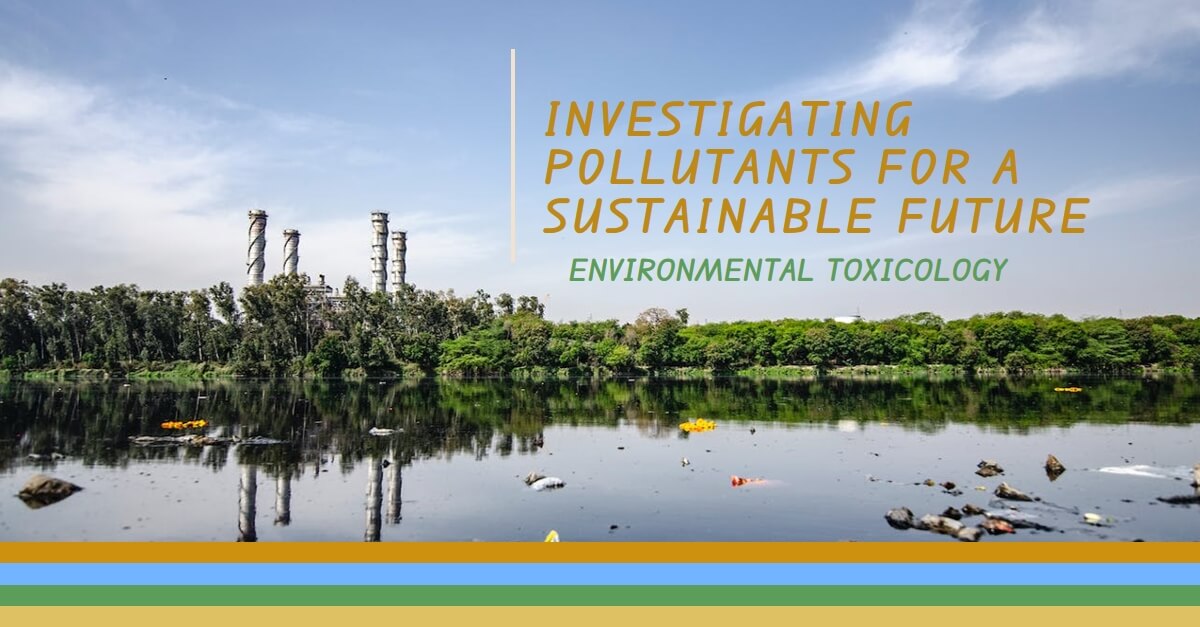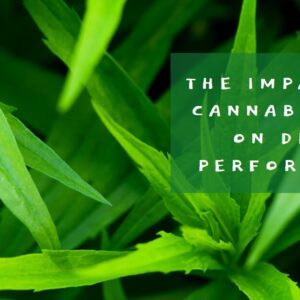In our modern society, pollution has become a significant issue. With the continuous development and creation of new things, our environment is becoming increasingly contaminated with harmful substances. This is where the field of environmental toxicology comes into play.
It is a scientific discipline that focuses on studying the impact of these pollutants on living organisms and the environment. By integrating various fields such as biology, chemistry, and ecology, environmental toxicology aims to comprehend and address our challenges.
Why is this field so important? Well, pollution not only poses a threat to the environment but also to our health. By investigating pollutants, we can determine their sources, how they spread, and the potential harm they can cause.
In this exploration of environmental toxicology, we will delve into how scientists study pollutants, why it is crucial for both us and the planet, and the role they play in establishing regulations to safeguard our environment and well-being. Join us as we uncover the mysteries of environmental toxicology, working towards a brighter and cleaner future.
What is Environmental Toxicology?
Environmental toxicology plays the role of an environmental detective. It employs scientific methods to understand the impact of chemicals and pollutants on our surroundings. Experts in this field examine elements such as air, water, and soil to identify harmful substances and their potential harm to living organisms.
The primary objective is to comprehend the origin, movement, and destructive potential of these pollutants. This knowledge is crucial as these substances can adversely affect not only the environment but also the well-being of animals, plants, and humans.
To achieve these goals, environmental toxicologists employ various techniques. They conduct experiments in laboratories, venture into the field to gather samples and utilize computer models to predict the spread of pollutants. Through these approaches, they gain insights into the associated risks and develop strategies to safeguard the environment and our health.
Significance of Investigating Pollutants
The importance of studying pollutants in environmental toxicology goes far beyond safeguarding ecosystems and addressing human health issues. It encompasses various interconnected factors that contribute to the overall welfare of our planet and its inhabitants. Let’s explore further the broader significance of investigating pollutants.
1. Biodiversity Conservation
Pollutants can have significant impacts on biodiversity by affecting the different species present in an ecosystem. The study of pollutants helps us comprehend how various organisms, ranging from microorganisms to top predators, react to environmental stressors.
This understanding plays a vital role in developing conservation strategies that aim to protect biodiversity and uphold the balance of ecosystems.
2. Climate Change Mitigation
Understanding the impact of certain pollutants, like greenhouse gases, on climate change is crucial. By studying their origins and consequences, environmental toxicologists play a vital role in developing strategies to minimize their effects. Their contribution to global initiatives focused on reducing carbon footprints and encouraging sustainable practices is invaluable.
3. Economic Complications
Pollution can cause significant economic effects, impacting various sectors such as industries, agriculture, and tourism. By studying pollutants, we can evaluate the financial implications of environmental deterioration. This knowledge helps policymakers and businesses make well-informed choices that strike a balance between economic growth and environmental sustainability.
4. Water Resource Management
Water pollution is a major issue that is of great concern worldwide, as it has a direct impact on the quality of our freshwater resources. By studying the pollutants present in water bodies, we can pinpoint the sources of contamination and develop effective strategies for water treatment and management.
This is crucial to guarantee the availability of clean and safe water for both humans and the health of our ecosystems.
5. Emerging Contaminants
It is crucial to remain watchful when investigating pollutants, especially when it comes to emerging contaminants like pharmaceuticals, microplastics, and nanomaterials. Being aware of the potential risks these substances pose is essential to adapt regulatory frameworks, waste management practices, and treatment technologies to effectively tackle the ever-changing environmental challenges.
6. Environmental Justice
Investigating pollutants plays a crucial role in tackling environmental justice concerns. Some communities may face an unfair share of pollution, resulting in environmental inequalities. Environmental toxicology aids in recognizing and resolving these imbalances, guaranteeing that every population has equitable access to a pristine and nourishing environment.
7. Long-Term Effects and Legacy Pollution
Some pollutants can have lasting impacts and remain in the environment for a long time. It is crucial to study legacy pollutants like persistent organic pollutants (POPs) and heavy metals to comprehend their endurance, accumulation in living organisms, and the potential consequences they may have on future generations.
Methodologies in Environmental Toxicology
1. Chemical Analysis
- Chromatography Techniques: Gas chromatography (GC) and liquid chromatography (LC) are extensively employed for the separation and measurement of distinct chemical compounds in environmental samples. These methods play a vital role in the identification of particular pollutants, including pesticides, heavy metals, and organic contaminants.
- Mass Spectrometry: Mass spectrometry is used in conjunction with chromatography to accurately detect and measure pollutants. This technique reveals valuable insights into the molecular composition of contaminants, helping us better comprehend their potential harm.
2. Toxicity Testing
- Bioassays: Living organisms are utilized in these tests to evaluate the harmful impacts of pollutants. Aquatic creatures such as Daphnia and fish are frequently employed in toxicity testing. Bioassays aid in determining the lethal concentrations (LC50) or effective concentrations (EC50) of pollutants, thereby offering valuable data for risk assessment.
- Cell Culture Studies: Researchers can investigate the effects of pollutants on cells by conducting in vitro studies using cell cultures. These studies involve assessing cell viability, gene expression, and biochemical markers to gain insights into the mechanisms of toxicity.
3. Field Studies
- Sample Collection: Environmental toxicologists gather samples from the atmosphere, water bodies, soil, and living organisms in their natural habitats. This process requires careful sampling techniques to capture the different levels of pollutants across space and time. The collected samples are later examined to evaluate the real impact of contaminants on organisms.
- Ecological Surveys: Researchers use surveys to track changes in biodiversity and the health of ecosystems. By observing the abundance of species, studying population dynamics, and noting behavioral changes, they gain valuable insights into the ecological effects of pollutants.
4. Molecular Techniques
- Genomic and Proteomic Analysis: Molecular methods are employed to examine how pollutants affect the genetic and protein expression of organisms. By conducting genomic and proteomic analyses, we can gain insights into how pollutants impact biological pathways. This helps us identify unique biomarkers that indicate exposure or the effects of pollutants.
- Environmental DNA (eDNA): eDNA analysis is a method that involves extracting and examining DNA from environmental samples such as water or soil. This innovative approach enables us to detect the presence of different species and assess the potential effects of pollutants on biodiversity.
5. Remote Sensing
- Satellite and Aerial Imaging: Remote sensing technologies offer a wider outlook on environmental transformations. They aid in pinpointing regions with elevated levels of pollutants, tracking alterations in land usage, and evaluating the scope of contamination across vast geographical expanses.
Researchers have a wide range of methodologies in environmental toxicology at their disposal. These methods offer a complete set of tools to study pollutants, comprehend their impact on both the environment and human health, and aid in the creation of successful strategies for environmental management.
Role of an Environmental Toxicologist
- Assessing the toxicity of chemicals and pollutants to set safety guidelines.
- Conducting risk assessments to predict and manage the potential harm from contaminants.
- Collaborating with regulatory agencies to formulate and implement environmental regulations.
- Identifying and developing bioindicators for monitoring environmental health.
- Studying the ecological impact of pollutants on species and ecosystems.
- Investigating links between environmental contaminants and human diseases to protect public health.
- Engaging in environmental forensics to identify and address pollution sources.
- Contributing to the development of remediation strategies for environmental cleanup.
- Educating and advocating for sustainable practices to raise awareness about environmental issues.
- Collaborating with interdisciplinary teams to address complex environmental challenges.
Conclusion
Environmental toxicology plays a crucial role in tackling the issues caused by pollutants in our surroundings. Through the study of pollutants, scientists and researchers actively contribute to the creation of sustainable methods, regulatory systems, and public awareness.
As we work towards a greener and healthier planet, the knowledge gained from environmental toxicology will keep shaping our comprehension of pollutants and lead us toward a more sustainable future.






